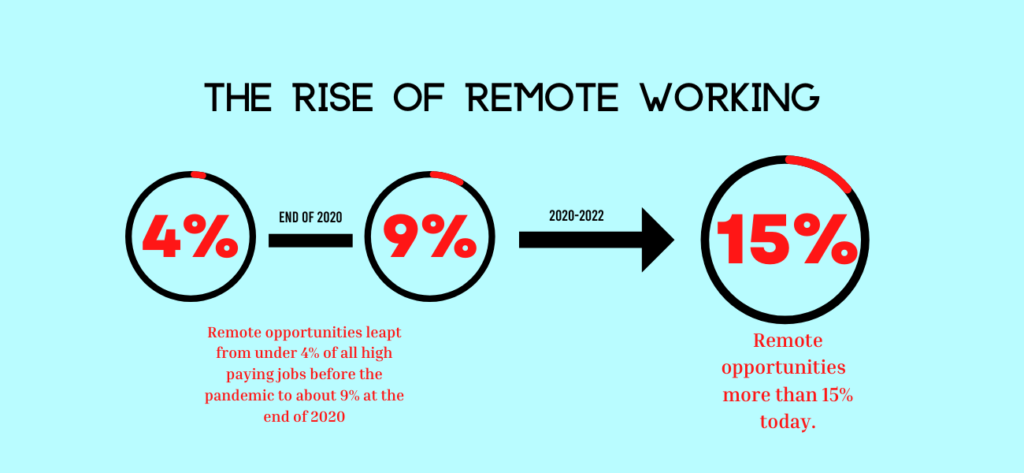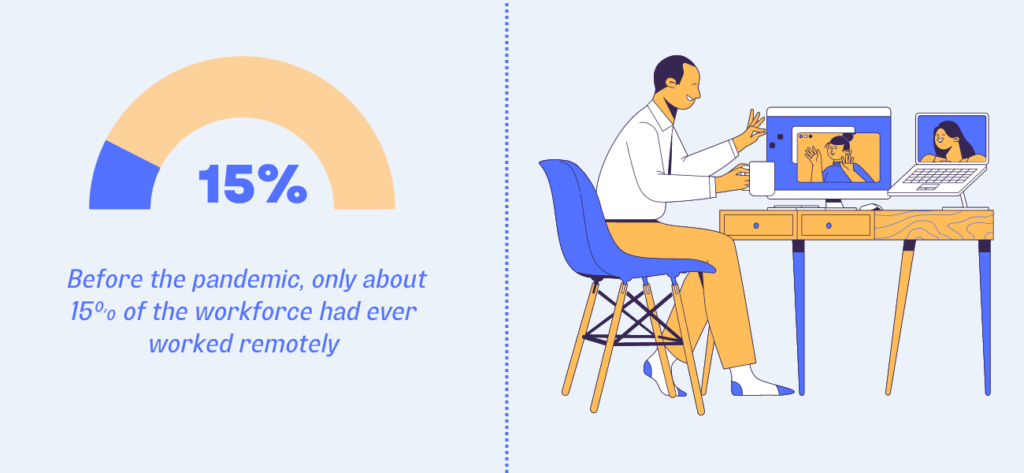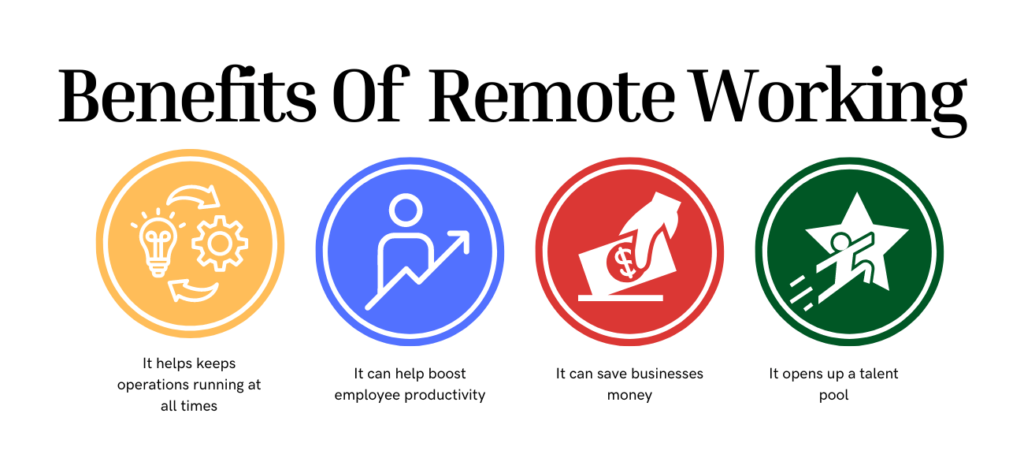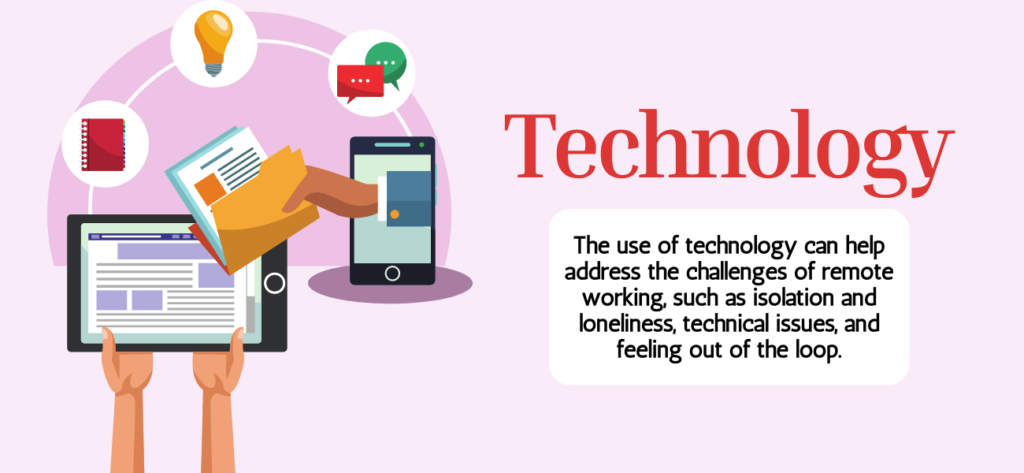How the Pandemic Changed Business Forever?

The Rise of Remote Working
The COVID-19 pandemic has caused widespread panic and disruption on a scale that is hard to comprehend. Amid all this chaos, one silver lining has been the rise of remote working. Forced to adapt to a new reality, large and small businesses have embraced remote working to keep their operations running during these challenging times. And while it is still too early to say definitively, it seems likely that the pandemic will permanently change the way we work, with more and more businesses opting for a remote workforce even after the threat of coronavirus has subsided. Ladders Inc reports that before the pandemic, only 4% of high-paying jobs were remote. In 2020, that number jumped to 9%, and today it stands at over 15%.

In this blog, we will discuss how the pandemic has changed business mode. We will also see benefits as well as challenges to remote working.
Work Mode Before the Pandemic
Before the pandemic hit, the work mode was very different. For one, people were much more likely to work in an office setting. This meant that there was a lot more face-to-face interaction, in-person meetings, and collaboration. Although people increasingly worked remotely even before the pandemic, it was not as expected or accepted as it is now.
Early estimates done by the Euro fund show that approximately 40% of all workers in the EU have switched to remote mode since the pandemic began. This is a significant increase from the 15% of workers who worked remotely before the pandemic hit.
Additionally, people tended to work set hours and take regular breaks throughout the day and were able to maintain mental health by socializing with colleagues. Now, with so many people working from home, work hours are often more flexible. And since there are no set breaks, people often work for longer periods without taking a break. This can lead to burnout and fatigue. Overall, the work mode before the pandemic was quite different from what it is now.

Work Mode After the Pandemic
The work mode after the pandemic has changed business forever. For one, a lot of companies have had to move online to stay afloat. This shift has seen an increase in the use of online tools and platforms and a rise in work-from-home arrangements through new technology. Additionally, there has been a greater focus on physical and mental health and safety in the workplace, with many businesses implementing new measures to protect employees from infection.
Fewer cite concerns about being exposed to the coronavirus – 42% now vs. 57% in 2020 say this is a major reason they are currently working from home all or most of the time. A majority of respondents cited a desire to work from home as their primary motivation for leaving the traditional workforce (76% vs. 60% in 2020). According to a recent study, the percentage of people teleworking has increased from 9% to 17%. A significant contributing factor to this increase is that more people are relocating away from where they work.

Overall, the work mode after the pandemic has been marked by significant changes, all of which are likely to have a lasting impact on the way businesses operate.
Rise of Remote Work
The rise of remote working has led to a trend of more people working from home. This shift has been driven by several factors, including the increasing prevalence of high-speed internet and the desire for a greater work-life balance. Working from home offers several advantages, such as the ability to set your hours and create a flexible work schedule.
Additionally, it can also help you to save on costs such as commuting and office rental. However, working from home can also be isolating, and it can be difficult to stay motivated without the structure of a traditional office environment.
The Federal Statistical Office reports that the percentage of workers who work from home at least half a day per week increased from 18% to 24% between 2013 and 2018. Findings from the survey show that approximately 50% of people who are employed or self-employed have been working from home during the crisis.
Whether you’re considering making the switch to remote working or you’re already working from home, it’s important to weigh the pros and cons carefully to ensure that it’s the right fit for you.

Benefits of Remote Working
There are several reasons why working from home has seen such a surge in popularity during the pandemic:

It helps keeps operations running at all times:
For businesses, the biggest benefit of remote working is obviously that it helps to keep operations running during difficult times. With employees working from home, businesses can continue to function even when their physical office space is closed.
It can help boost employee productivity:
But even beyond that, there are many other benefits that businesses can enjoy by embracing remote working. For one, it can help to boost employee productivity and morale. Employees who are free to work from home often find that they are more productive than in a traditional office setting. And happy employees tend to be more productive employees, so it’s a win-win for businesses.
It can save businesses money:
Another big benefit of remote working is that it can help businesses to save money. With employees working from home, businesses don’t have to worry about the costs of renting office space or providing equipment and supplies. Additionally, they may also see a reduction in other costs such as travel and commuting. So overall, there are plenty of reasons why businesses should consider embracing remote working, even after the pandemic ends.
It opens up a talent pool:
Another big benefit of remote working is that it opens up your talent pool. When you’re not limited by geography, you can hire the best employees no matter where they live. This is particularly beneficial for small businesses and startups that might not be able to compete with larger businesses when it comes to salaries and benefits.
Challenges of Remote Working for Businesses
Of course, some challenges come along with remote working.
Even though there are plenty of advantages to remote working, it’s not without its challenges. Some of them are discussed below:
Employees may be less productive
Remote work helps improve employee productivity but it is also, perhaps the biggest challenge for managers to see their employees more productive while allowing them to work remotely.
When you can’t physically see your employees, it can be harder to tell if they’re working or if they’re slacking off. This is why clear communication and defined expectations are so important when managing a remote team.
It is difficult to maintain company culture:
Another challenge of remote working is maintaining company culture. It can be harder to build camaraderie and esprit de corps when everyone is spread out across different locations. Again, clear communication is key here. You need to find ways to stay connected with your team and ensure that everyone feels like they’re part of the same company culture regardless of where they’re physically located.
5 Challenges of Remote Working for Remote Workers

The following five challenges have been a headache for employees as well as managers after the pandemic has urged remote work:
1. Isolation and Loneliness
One of the challenges of remote working is isolation and loneliness. When you work remotely, you don’t have the opportunity to interact with co-workers daily. This can lead to feelings of isolation and loneliness. Additionally, working from home can make it difficult to socialize outside of work, as you may not have the opportunity to meet new people or build relationships.
2. Time Management
Another challenge of remote working is time management. It can be difficult to stay focused and motivated when you’re not in an office environment. Additionally, working from home can give you more flexibility in terms of your work schedule, which can lead to procrastination and a lack of productivity.
3. Distractions at Home
Another challenge that comes with working from home is distractions. Your home has many potential distractions, such as children, pets, the TV, and household chores. It can be difficult to stay focused on your work when there are so many potential distractions around you.
4. Technical Issues
Another challenge that remote workers face is technical issues. When you’re working remotely, you’re reliant on technology for communication and collaboration. If there are technical issues, such as a bad internet connection or problems with your computer, it can make it difficult to do your job effectively.
5. Feeling Out of the Loop
Finally, remote workers face another challenge: feeling out of the loop. When you’re not in the office, it’s easy to feel like you’re missing out on important company news or developments within your industry. Additionally, you may not have the opportunity to attend company events or networking functions, which can make it difficult to build relationships with co-workers.
What is the Solution to these Challenges?
The above-mentioned challenges can be addressed with the help of technology, clear communication, and good time management.
Technology:
The use of technology can help address the challenges of remote working, such as isolation and loneliness, technical issues, and feeling out of the loop. Technology-needed workers need to be trained early days on the importance of using technology wisely.

There are some ways to use technology to stay connected with co-workers and build relationships, such as:
- Using video conferencing for meetings and team-building exercises
- Using messaging apps, such as Slack, for communication
- Sharing files and documents through cloud-based storage services, such as Dropbox
- Joining online forums or discussion boards related to your industry
Clear Communication:
Another way to address the challenges of remote working is through clear communication. It is important to set expectations with your team and ensure that everyone is on the same page. Additionally, you need to find ways to stay connected with your team and keep them updated on company news and developments.

Some ways to stay in communication with your team include:
- Scheduling regular check-ins or video calls
- Sending emails or messaging updates
- Creating a company newsletter
Time Management:
Finally, another solution to the challenges of remote working is time management. When you’re working from home, it’s important to have a structured routine. This will help you stay focused and motivated. Additionally, you need to make sure that you’re taking breaks and scheduling time for social activities outside of work.
Some tips for time management include:
- Creating a daily or weekly schedule
- Setting deadlines for yourself
- Taking breaks throughout the day
- Making time for social activities outside of work
The Future of Work: 5 Predictions for the Next Decade
Over the past decade, we’ve seen a massive shift in the way work is done. Thanks to advances in technology, more and more people are opting to work remotely, either full-time or as part of a flexible arrangement. And it’s not just freelancers and digital nomads who are taking advantage of this; even traditional companies are starting to allow their employees to work from home or coworking spaces.
But what does the future hold for the remote work movement? Will it continue to grow at its current rate, or will it level off? Here are 5 predictions for the next decade of remote work.
1. The Number of Remote Workers Will Continue to Grow steadily
There’s no doubt about it: the number of people working remotely is on the rise. A recent Gallup poll found that 43% of employed Americans said they spent at least some time working remotely in 2016, up from 39% in 2012. And this trend is only going to continue in the years to come. As more and more companies embrace remote work, we’ll see steady growth in the number of people working from home or in coworking spaces around the world.
2. More Companies Will Allow Their Employees to Work Remotely
Currently, about 3.4 million Americans (or 2.8% of the workforce) work from home at least half of the time. But this is only a fraction of the potential number of remote workers out there. A recent study by GlobalWorkplaceAnalytics found that as many as 80% of employees would like to work remotely at least some of the time.
3. We’ll See More Flexible Arrangements and Part-Time Remote Workers
At present, most remote workers are either self-employed or employed full-time by a company that allows remote work. However, we’re starting to see a shift towards more flexible arrangements, with an increasing number of people working part-time or on a freelance basis. This trend will likely continue in the next decade as more companies adopt flexible working arrangements and allow their employees to choose how and where they work.
4. Technology Will Make It Easier Than Ever to Work Remotely
One of the reasons why remote work has become so popular in recent years is because technology has made it easier than ever before to stay connected and get work done from anywhere in the world. And this trend is only going to continue in the next decade as new technologies are developed and adopted by businesses and individuals alike.
5. There will be an increase in Purposeful Coworking Spaces
In recent years, we’ve seen a boom in coworking spaces around the world as more and more people opt to ditch their home offices and co-work with like-minded individuals. This trend is likely to continue in the next decade as people increasingly seek out purposeful places to work that offer community, collaboration, and connection.
We hope the blog article was helpful.


